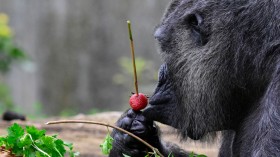The existence of life in the universe has always been shrouded in mystery. But now, a team of scientists has proposed a closer look on LUCA, which is possibly the oldest ancestor of living things, through genetics.
According to a study published in the journal Nature Biology, the paper aims to fill the void of information about LUCA, or the last universal common ancestor of all cells, which acts as a link between the first microbial life on Earth to the planet's abiotic phase.
To get a clearer picture of LUCA, the researchers investigated the phylogenetic trees of 6.1 million protein coding genes. From the pool, they identified 355 genes that may have been in LUCA.
The scientists reveal that the 355 genes showed that the organism (LUCA) lived in deep sea volcanoes, where magma erupts through the ocean floors. Because of its living conditions, some LUCA's genes contain a heat-dwelling enzyme, called gyrase. It can also metabolize hydrogen.
"I was flabbergasted at the result, I couldn’t believe it," William F. Martin of Heinrich Heine in the University in Düsseldorf and the study leader, told the The New York Times.
Martin and his team also found out that LUCA was an anaerobe that lived in an oxygen-less environment and consumed minerals.
"When we look at the inferred metabolism of LUCA, we are looking at the dominant and most successful kind of metabolism on the planet before the Bacteria and Archaea diverged," said biologist James McInerney.
He added, "This new study provides us with a very intriguing insight into life four billion years ago.”
James Lake, an evolutionary biologist from the University of California, explained to Science that genes from LUCA could still be scattered in living things today, particularly in modern microbes like clostridium, a genus of anaerobic bacteria, and methanogens, a group of H2-eating archaea.
To learn more about LUCA, the oldest ancestor of living things, check out the video below.
© 2024 NatureWorldNews.com All rights reserved. Do not reproduce without permission.

![Origin of Life: Discovery of Lava Being a Building Block of Life Hints 'Humans Have Volcanic Origins' [Study]](https://1471793142.rsc.cdn77.org/data/thumbs/full/70262/280/157/50/40/origin-of-life-discovery-of-lava-being-a-building-block-of-life-hints-humans-have-volcanic-origins-study.jpg)
![Great White Sharks Observed for the First Time Changing Their Behavior in Different Marine Environments [Study]](https://1471793142.rsc.cdn77.org/data/thumbs/full/70251/280/157/50/40/great-white-sharks-observed-for-the-first-time-changing-their-behavior-in-different-marine-environments-study.jpg)


